

from Barbarossa victims
|
|
|
|
The late version of MiG-3 replaced the early version on production line during
the late summer of 1941, probably in July; it is predominant over the late version
in photos taken after the late autumn 1941.
The late MiG-3 version is easily distinguishable in photos from early
version via the first exhaust pipe, which is covered by a cowling,
by long gun barrel covers over the nose, and from thin triangular plates on
the outlets of side oil radiators. The engine cowling is scomposed differently
too.
The radio set presence can be usually recognized
from the visible radio mast and wires, but some examples show no radio boxes
protruding under the canopy even if they have the mast and wires.
Usually the MiG-3s were flown with the sliding part of the canopy opened
(or, sometimes, removed), because of radiator heat and gas infiltrations from
the engine, and the fear to be imprisoned if the aircraft should be shot down;
in fact, the canopy was hard to slide at flying speeds above 400 km/h.
The rockets, set on triple launchers 3ROB-82, can
be used both against ground targets and air targets during bomber interception.
They are regularly used since winter 1941/42, particularly in the Moscow area.
The tail wheel doors are usually bulged, but there
is some exception to this rule. The tail wheel retraction mechanism was subject
to malfunctions, so it was often locked in open position on the late examples;
the doors were replaced by a canvas cover
with various shapes.
The slats were usually present on late examples;
there are some exceptions to this rule. The closed flaps are difficult to see
on photos, but their presence is recognizable from the underwing pitot probe,
while their absence is associated with a leading edge mounted one.


from Barbarossa victims
This example, captured by the Germans, features the "za rodinu" ("for homeland") inscription on its side. If the photo was taken during tha summer 1941, it could be one of the first documented late model MiG-3s; its tail wheel doors are still of the early style. Being without its engine cowling, its identification as a late version is due to the first exhaust stack cowling, the space behind the last stack and the triangular plates behind the oil radiator. Note the deletion of the star on the tail.
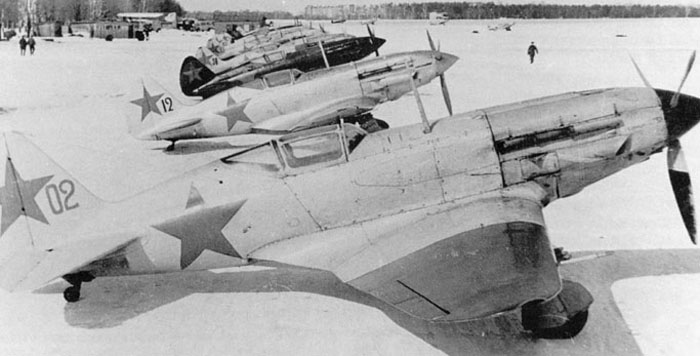
from OKB MiG
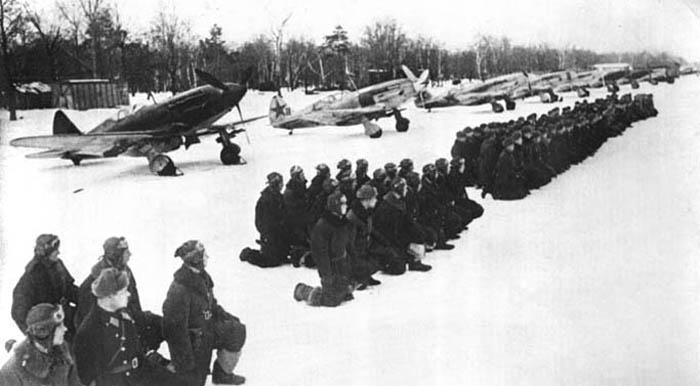
from Red Stars (old edition)
from "Unknown battles on the Moscow skies" of Hazanov
Three photos showing a line of MiG-3s, shot on March 7 1942
when the 120 IAP of the Moscow Air Defence (PVO) was made a Guards Regiment
as 12 Gv.IAP as a reward for its merits.
The line shows both white-painted and camouflaged aircraft, all armed with rocket
launchers.
These photos are a good source of beautiful profiles.






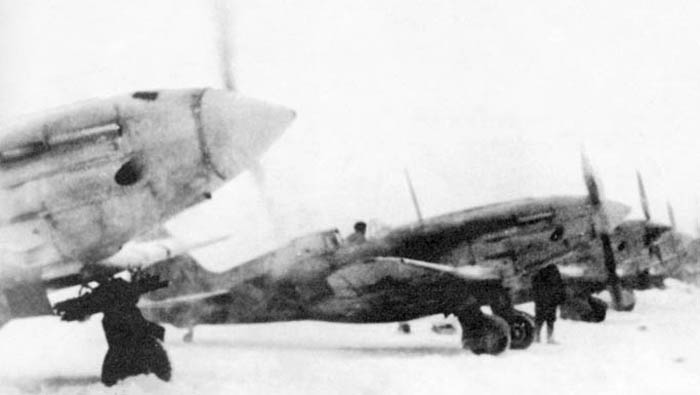
from "Unknown battles on the Moscow skies" of Hazanov
This image shows aircrafts of 12 Gv.IAP ready to fly; red 39 is recognizable here again.

These MiG-3s were collected from spare parts by the Moscow Aircraft Factory,
and delivered to 172 IAP in February 1942.
The slogans are:
"Za rodinu" (For the homeland), pilot D. Latyshev
"Za Stalina" (For Stalin), pilot A.K. Popov
"Za Partii Bolshevikov" (For the Bolshevik Party), pilot V.V. Rybalko.
The arrows are believed to be red, even if they look a bit darker than the stars.
Note the unusually immaculate white color.
The objects on the ground are compressed air bottles to charge the pneumatic
system of the aircrafts.
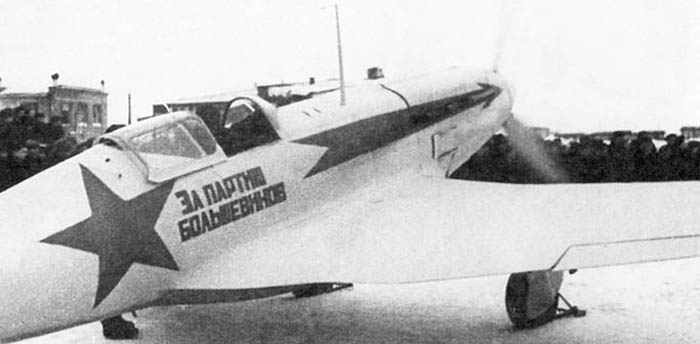
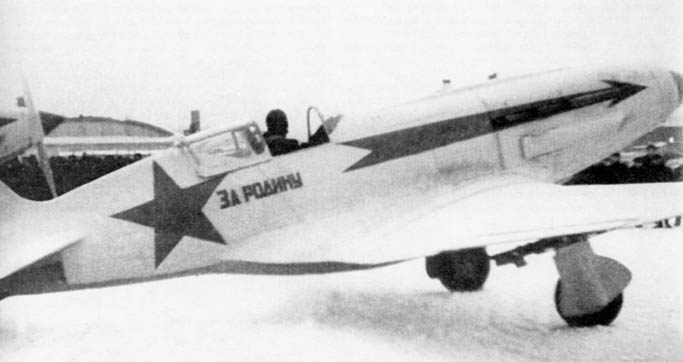
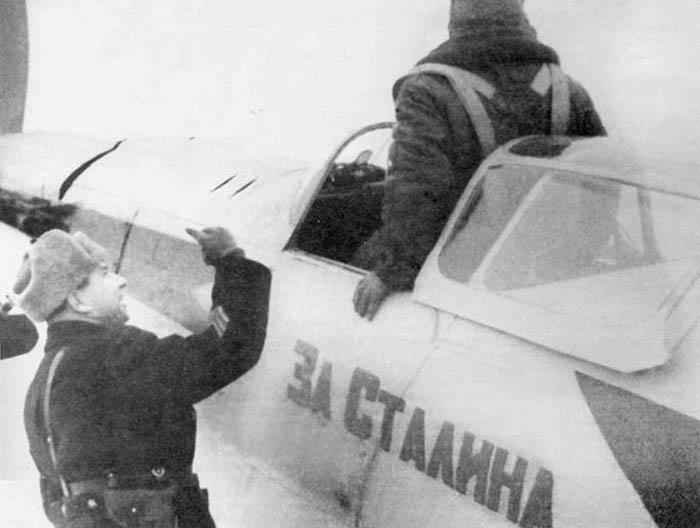
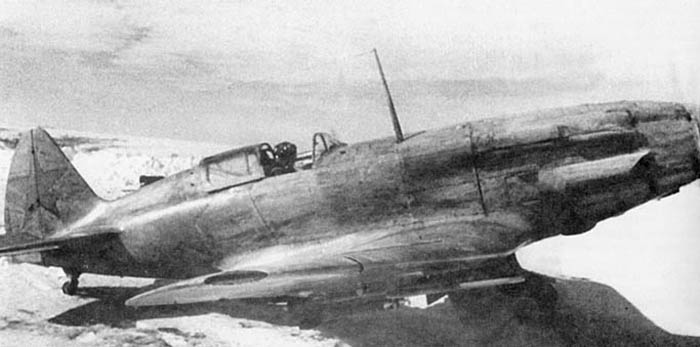
from "Unknown battles on the Moscow skies" of Hazanov
 |
Here is an example with a roughly brushed white winter layer on the Moscow front, winter 1941/42. |
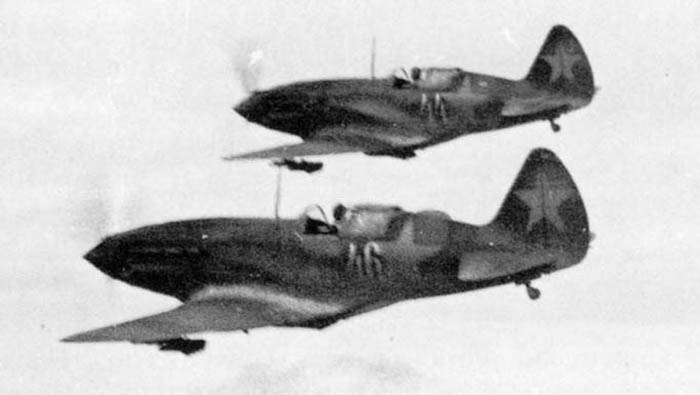
from Aviacija n.3
 |
These aircrafts are flying over Moscow, probably during the spring of 1942. Note the underwing rockets, the fixed tail wheels and the opened canopies. The camo is green and black. |
 |
Above: An aircraft with the slogan "Smert nemetskim okkupantam!" (death to the German occupants!). The aircraft has thin outline around the stars. from Red Stars Left: |
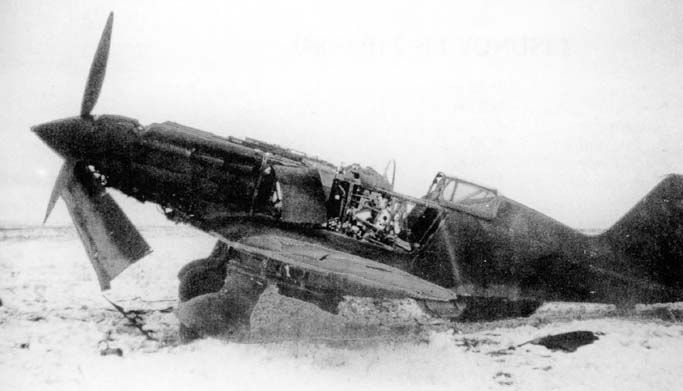
 |
This photo shows a partially dismounted aircraft. The visibility of the internal structures is noteworthy. The aircraft shows some rough repainting. |
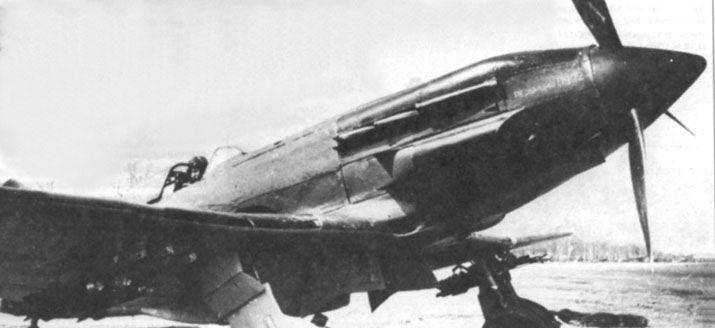
from Aviacija n.3
This interesting perspective shows the underwing rockets and the red (?) reduction gear rate on the nose. Two reduction rates were possible( 0.902 and 0.732) and were coupled with different propellers, so the rate was written on the nose to avoid mistakes. The aircraft looks painted with green/black camouflage with unusually sharp lines.

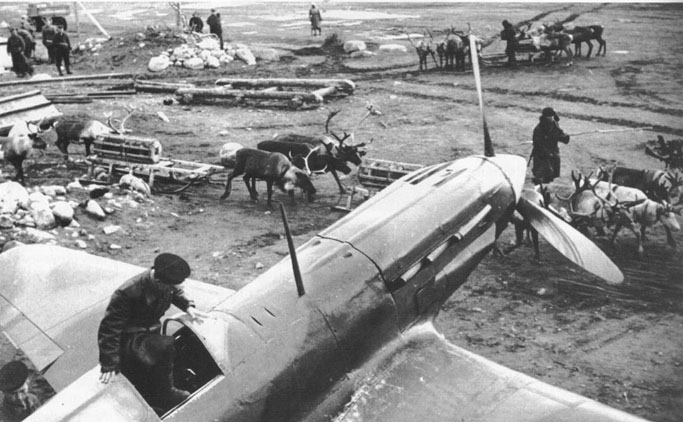
A MiG-3 of 2 GSAP/VVS-SF at Vayenga airport in 1942; only four MiGs survived
at the beginning of 1942, and only one was lost during 1942, set on fire after
landing because of combat damages. The remaining 3 MiGs were transferred to
255 IAP/VVS-SF where they remained in hardly serviceable conditions until mid
1943, when they were transferred ot the VVS-TOF, the Soviet Pacific Fleet, putting
an end to MiG-3 service in VVS-SF.
Particularly noticeable are the Lapps with their reindeer helping the VVS ground
crew. Sleighs were used on the unsnowed ground too. The objects on the canisters
look like bombs, probably for bombers SB that were in the 72 SAP; this SAP got
Pe-2 as well since July 1942.
Note the Spitfire-like camo scheme on the wings; this style seems to be rare
on photos, forthemost the bands had a longitudinal shape.

from OKB MiG
 |
This photo shows a green and black camouflaged aircraft belonging to 8
IAP VVS Chf, Black Sea 1942. Note the rare starter attachment on the spinner. |

from Air International
This aircraft is from the 7 IAP near Leningrad in 1942. This aircraft was flown without the canopy, and has an unusual camouflage that could be made with sand bands and black stripes over a green/dark green background background. Many drawings and models have been done of this attractive example, but, as you see, they are widely hypothetical.
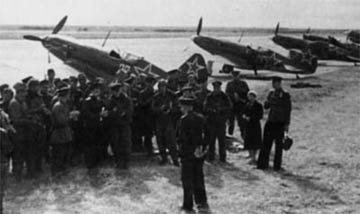 |
 |

A line of MiG-3 and P-40 of the 7 IAP, Baltic Fleet, near Leningrad, early
1944. Note the wide white outlines on the stars, the fixed tail undercarriage
and the white forward part of the spinner. The aircrafts are probably camouflaged.
|
|